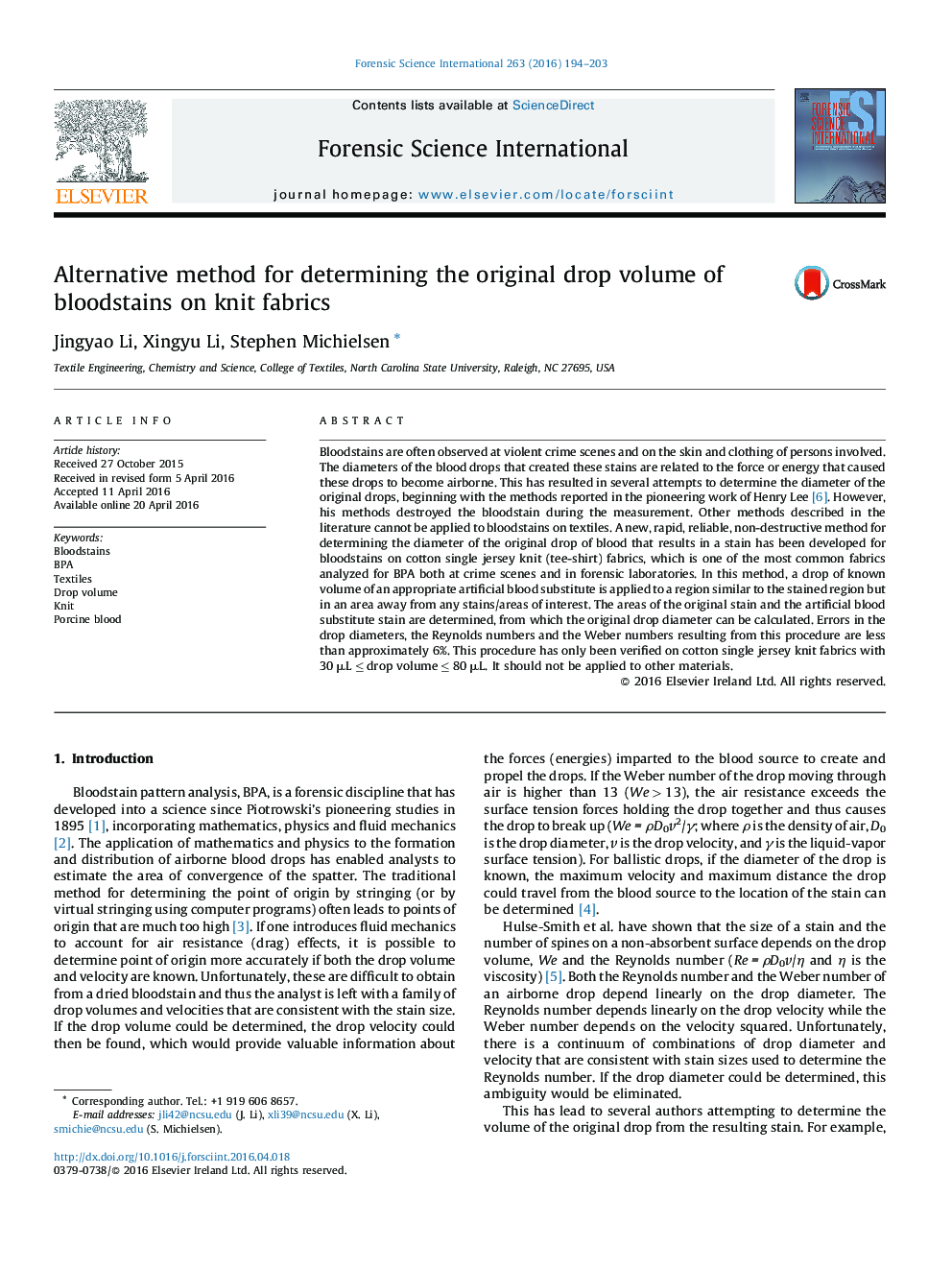| Article ID | Journal | Published Year | Pages | File Type |
|---|---|---|---|---|
| 95152 | Forensic Science International | 2016 | 10 Pages |
•A new method for determining the small volume bloodstains on 100% cotton jersey knit fabrics is described.•Blood drop diameters are reproduced within 7% of actual diameters.•Method is non-destructive, fast and reproducible.
Bloodstains are often observed at violent crime scenes and on the skin and clothing of persons involved. The diameters of the blood drops that created these stains are related to the force or energy that caused these drops to become airborne. This has resulted in several attempts to determine the diameter of the original drops, beginning with the methods reported in the pioneering work of Henry Lee [6]. However, his methods destroyed the bloodstain during the measurement. Other methods described in the literature cannot be applied to bloodstains on textiles. A new, rapid, reliable, non-destructive method for determining the diameter of the original drop of blood that results in a stain has been developed for bloodstains on cotton single jersey knit (tee-shirt) fabrics, which is one of the most common fabrics analyzed for BPA both at crime scenes and in forensic laboratories. In this method, a drop of known volume of an appropriate artificial blood substitute is applied to a region similar to the stained region but in an area away from any stains/areas of interest. The areas of the original stain and the artificial blood substitute stain are determined, from which the original drop diameter can be calculated. Errors in the drop diameters, the Reynolds numbers and the Weber numbers resulting from this procedure are less than approximately 6%. This procedure has only been verified on cotton single jersey knit fabrics with 30 μL ≤ drop volume ≤ 80 μL. It should not be applied to other materials.
